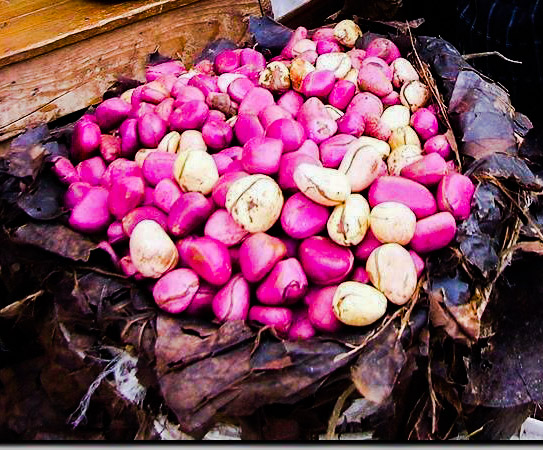
For the Krios of Sierra Leone New Year’s Day isn’t just the first day of a new year, it is also the day they talk to the dead. The Krios are descendants of freed African American, West Indian and Liberated African slaves who settled in the Western Area of Sierra Leone. Forty thousand Krios make up 2% of Sierra Leone’s modern-day population.

On 1 January, the Krio families visit cemeteries across Freetown to pay respect to their deceased family and ancestors. While a majority of Krios are Christians the tradition of talking to the dead isn’t Christian but African. The Krios’ veneration of their dead is closely related to Yoruba tradition. Yorubas believe that “death is just a passage to another life”, and continue to revere and communicate with their dead. It is an emotional moment for the family members, especially those of the recently deceased.
“I miss my mother, last year like this she was here with us but now she is no more. It is not easy but God knows best. I am so happy I could come to her grave and talk to her,” said Fredericia Lisk, a 38-year-old Krio woman from the Western Area. Her mother Ernestine Macauley passed away in October 2019 at the age of 63. They used to visit the graves of their family together, this year Lisk is visiting her mother at her grave.

The Krio custom of talking to the dead has been passed down from one generation to the next. At the graveside, Krios ask their ancestors for help and for their blessings. Krios believe that if they discuss family issues with the dead, their ancestors will open doors of provision to make the rest of the new year successful. Before going to the graveside, someone is sent to check on the status of the grave and prepare it for the coming visit.
On the day of the visit, Krios take along water, white and red kola nuts, and if the deceased liked a particular type of alcoholic drink; rum, gin, beer, and stout will be taken to the grave. After pouring libation to the dead, the kola nuts are used to open a pathway of communication to consult with the spirit of the dead.
“The kola nuts are broken into two halves, both the red and the white, making it four in total. The kola nuts are shaken with both hands and dropped on the grave. If one red and one white is turned to the grave and one white and one red is turned to the family members then the deceased has accepted the request of the family. If they are turned otherwise then they are not happy with the family and the request is not accepted. The family then apologizes and repeats the process until it is accepted, ” explained Nathan Thorpe, a Krio man from Freetown who practices this tradition annually.

The kola nuts signify that the dead have accepted the requests, the upward-facing two kola nuts and the remaining drinks are shared amongst the family. They toast to unity and a successful year until the next time when they return to speak to the dead.

Leave a reply
You must be logged in to post a comment.












